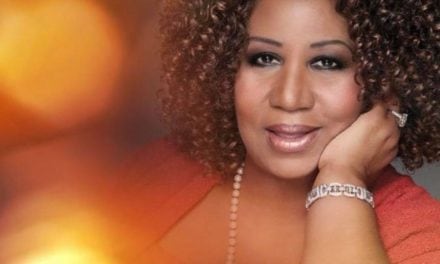
HEAVY PERIODS? Members of The White Dress Project won’t let anything stop them from wearing their favorite outfits. And they blow kisses to those who’ve got their back in the fight against fibroids. See end of story below for more information. (Photo courtesy of The White Dress Project)
Gessie Thompson’s story has become an inspiration to many women. Her 10-year path to motherhood, a journey that took her through three fibroid surgeries and three rounds of in vitro fertilization (IVF) is detailed in her book Hope Beyond Fibroids.
Thompson was one of the hundreds of thousands of women who endure fertility complications as a result of fibroids — benign uterine tumors that affect 80 percent of black women and 70 percent of white women. With a loving husband by her side, an excellent physician and countless hours of prayer, Thompson beat fibroid-based infertility, but she put up one heck of a fight.
When Thompson and her husband decided they could survive only one final round of IVF (necessary because of the scarring caused by three myomectomies), Thompson turned to her faith. “I said to God, ‘If it’s in your plan for me to have a child, I need to know this time.’”
They got their miracle.
“I gave birth to a healthy daughter, Mia. She turned 3 on September 8,” Thompson says. “She’s our joy.”
Even though Thompson’s ordeal lasted a decade, she is one of the lucky ones. She was able to avoid surgeries — such as hysterectomy — that would have destroyed her ability to carry a child and possibly brought on menopause in her 30s. That’s no small feat. Physicians routinely advise women like Thompson to have a hysterectomy. As a result, more than 80 percent of hysterectomies, often related to fibroids, are thought to be unnecessary.
Now a fertility coach, Thompson received excellent and appropriate care because she was an educated patient who entrusted her care to a highly trained specialist. Her physician — David Rosenfeld, M.D., at North Shore University Hospital’s Center for Human Reproduction in Manhasset, N.Y. — did his best to help her have the child she desired.
Aggressively pursuing early, appropriate treatment from the right physician is the only way to beat fibroids, whether your goal is motherhood or freeing yourself from symptoms such as severe bleeding or chronic pain.
“Black women tend to have larger fibroids that grow faster, but they tend to seek treatment later in life because of a lack of medical insurance or other issues,” explains Ray Howell, M.D., co-author, with Millicent Hodge, of the book Black Women and Fibroids: A Conversation With Black Women. “But it’s best to monitor them carefully and have your physician intervene at a young age.”








